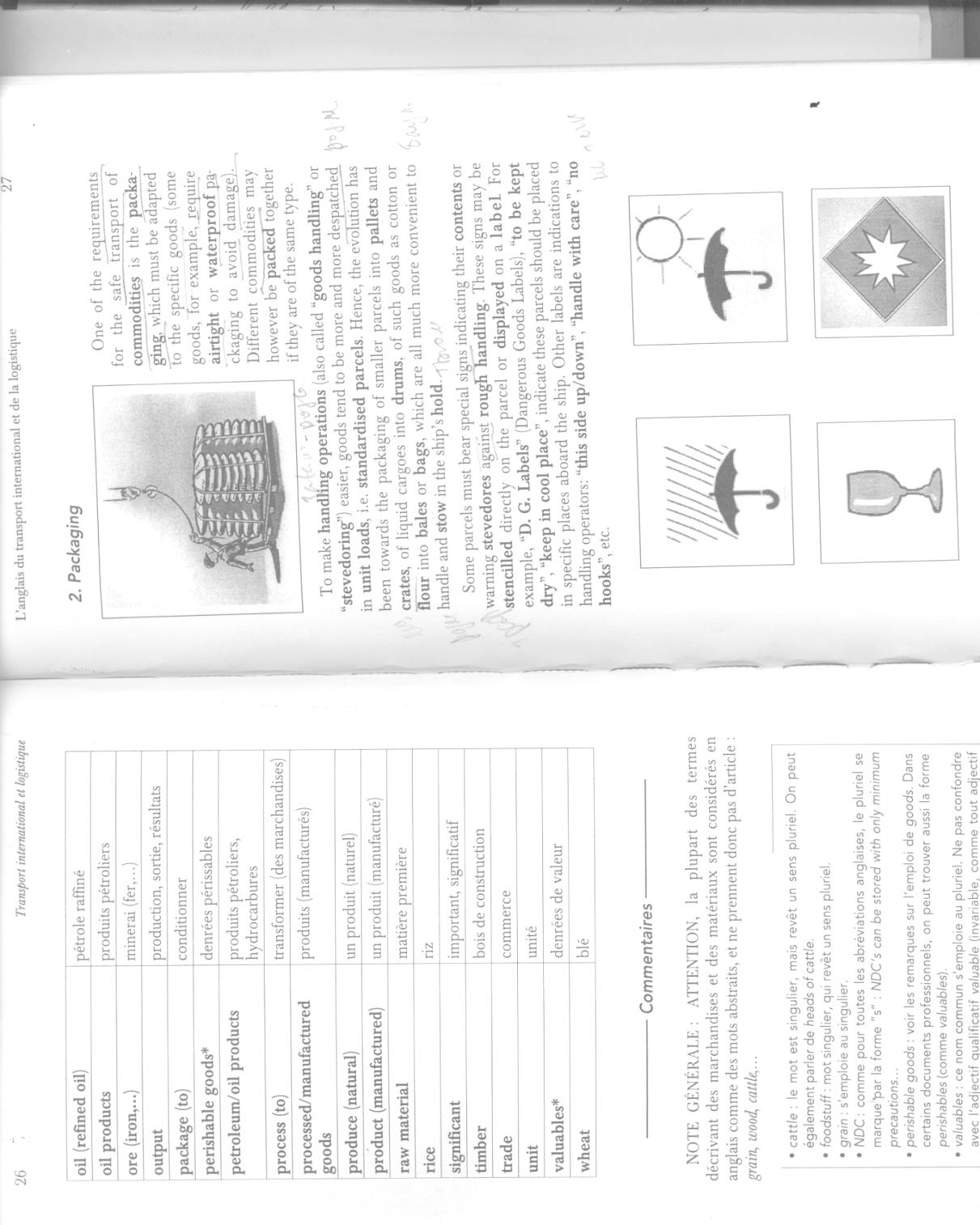
- •In this lesson you learn
- •1. Read and translate the text. Text a
- •2. Answer the questions to the text.
- •3. Find the stem-words in the text to the given ones.
- •5. Complete the sentences using the vocabulary from the text.
- •6. Find terms in the text to the following definitions.
- •7. Answer the questions:
- •8. Communicative situation.
- •Look through text a, underline the verbs used in passive. Translate the sentences into Ukrainian.
- •Put the verbs in brackets into the correct passive form.
- •L ook at the information and write sentences as in the example.
- •1. Read and translate the text. Pay attention to the following words and word combinations. Text b
- •Various types of goods
- •2. Translate the following words and word combinations into Ukrainian.
- •3. A. Complete the sentences with the right expression from the text.
- •In this lesson you learn
- •1. Read and translate the text. Text a Packaging
- •2. Answer the questions to the text
- •3. Find in the text synonyms to the following words and word combinations.
- •4. Complete the sentences with a necessary word from the essential vocabulary.
- •5. Find in the text the terms described by following definitions.
- •6. A) Match each picture with the corresponding expression.
- •7. Translate the following types of containers into Ukrainian and match the following definitions with the right type of container.
- •8. Give the abbreviations for the following word combinations.
- •Part 2 Text b
- •1. Using essential vocabulary read and translate the text.
- •Insurance
- •6. Match the term with its definition.
- •7. Answer the questions to the text.
- •9. Comment on the following situation.
- •10. Speak about:
- •11. Annotate the text.
In this lesson you learn
about packaging of goods
about goods insurance
Essential vocabulary
airtight consignor bag bale bear signs against box commodity consignment consolidation crate dimension display gross weight groupage handling operation
label marshalling area measurement net weight pack packaging pallet payload refurbish repair rough handling stevedore
stow strip stuff stuffing shed tare weight waterproof |
герметичний вантажовідправник мішок тюк містити знаки від ящик товар вантаж об’єднання пакувальна клітка/ящик розміри показувати вага брутто об’єднання завантажувально-розвантажувальна операція етикетка, наклейка сортувальна станція розмір вага нетто упаковувати упаковка піддон корисне навантаження відшкодовувати ремонтувати грубе/необережне поводження навантажувати (розвантажувати) корабель вантажити, завантажувати розвантажувати, розбирати заповнювати завантажувальний ангар вага тари водонепроникний |
1. Read and translate the text. Text a Packaging
One of the requirements for the safe transport of commodities is the packaging, which must be adapted to the specific goods, e.g. airtight or waterproof packaging. Different commodities may however be packed together if they are of the same type.
To make handling operations easier, goods tend to be more and more dispatched in unit loads, i.e. standardized parcels. Hence, the evolution has been towards the packaging of smaller parcels into pallets and crates, of liquid cargoes into drums, of such goods as cotton or flour into bales or bags, which are all much more convenient to handle and stow.
Some parcels must bear special signs indicating their contents or warning stevedores against rough handling. These signs may be stencilled directly on the parcel or displayed on a label, e.g. “D.G. Labels” (Dangerous Goods Labels), “to be kept dry”, “keep in a cool place”, “this side up/down”, “handle with care”, “no hooks”, etc.
The development of containers seems to have been the most striking feature of the evolution of packaging in recent years. Easy handling and stowing explain their rapid growth, but so does the range of possibilities they offer: standardized containers (20-footers, TEU’s) are available for goods of all types.
A single consignor may need a complete container (FLC/Full Container Load) or only part of it, in which case “groupage” will take place with several shipments (LCL/ Less than Container Load). Packing a consignment into a container is the stuffing operation, carried out in the stuffing shed. The opposite operation is referred to as stripping.
Labels placed on each container should indicate a number of information: measurements, payload, tare weight, gross weight and net weight. Each box should also bear a date plate as well as a CSC plate (Container Safety Certificate) to indicate it conforms to approved standards of safety.

On arrival in the terminal, containers are generally stored in the marshaling area, where they can be collected by consignees or transport operators. If a few containers prove to be in a bad state, they may have to be sent to a specialist firm in order to be repaired or refurbished.
